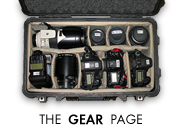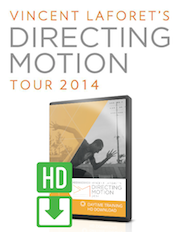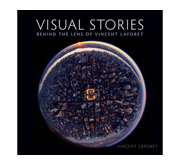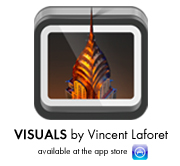Lytro: The future of imaging?
I met Ren Ng 4 to 5 years ago in Mountain View when he invited me to come over and see a new sensor technology he was developing. I saw some of the early prototypes cameras of what eventually became the Lytro camera. If find this discussion at TED X particularly fascinating – notably towards the last third – where he discusses the possibility of creating a 3D image, let alone computational computing’s power to actually have us MOVE around an image after the fact. This has tremendous applications not only to stills – but also potentially to film and gaming technologies.
You should definitely check this video out to see Ren give you a pretty unique view into the history of photography, the potential future of imaging, and a totally unique way to capture light. Very very inspiring…
On a side note (and I should note this is TOTAL SPECULATION on my part) I have been waiting for a long time to see if this technology would someday make its way into the iPhone or some other Apple product, let alone another big camera company – as it was reported that Ren met with Steve Jobs on several occasions, notably close to the time of Steve’s passing. This technology is simply too important to ignore- and has incredible potential uses for both amateur and professional photographers. I do believe that this technology already holds a place on the timeline of imaging history – and that we "haven’t seen anything yet."













I ordered one the first day. Then canceled the order when I realized that it was not for print work. It is $500.00 web app. A novelty item at most. I wish them all the luck, and will wait until the product has some practical use. I was very excited and hope they survive this weird initial launch. I don’t mean to be harsh, yet the real potential is far from realized.
As someone who dabbles in microscopy imaging, the Lytro could be the perfect way of getting everything into a single focus plane without doing hundreds of focus slices.
That goes for macro photography also with the added benefit of having live specimens and not in a controlled environment to get deep depth of field.
Hope they figure out how to make everything in focus with a cool 8MP equivalent in Megaray resolution soon.
Great talk!
Doug, would you mind expanding on the restrictions in place with this technology in its current state? Can the refocus and point of view-shift only be used in the application and then not saved, thus not being printable? Are there any quality hits for doing this?
Very inspiring video.
Lord Grammar Von.. Reply:
June 15th, 2012 at 9:59 am
The image is far too low resolution to use for print work. The 11 “Mega rays” don’t translate to 11 megapixels, because the data is split into multiple focus planes, so the saved image (one focal plane) is considerably lower resolution.
It will surely become interesting once they manage to take 24 or 25 of these Lytro (lightfield) frames per second. Imagine being able to shift focus on moving objects in post… Of course you can achieve a similar effect now with blur maps in After Effects, but this doesn’t give you the parallax effect.
Still, I can see applications of this in documentaries as well. Imagine a Ken Burns effect on a still taken with a Lytro that allows you to shift focus between objects in the same photo. Who knows what the current maximum resolution is? And is there a way to record the focus shifts?
Vincent Laforet Reply:
June 15th, 2012 at 2:40 pm
Agreed – Lytro in motion would be very, very interesting…
@Doug Stocks, http://support.lytro.com/entries/21048657-h-export-pictures-to-jpg-from-lytro-desktop
You can export to .jpg at 1080 x 1080 res.
@Christian Johnsson,
The current resolution equates to 1080×1080 pixels in the current product. Which works ok for web apps but hardly professional work. Until they can get a 5-8MP equivalent or more camera then we can start to see this tech being in everyone’s arsenal.
One of the huge problems is that for this 1.16MP version the amount of computation, file size, and photo sensor array is pretty huge. Tech will get there and sure hope they get a more useable product out so the company is self sustainable.
I believe they could market this to video and photo microscopy applications in labs and university environments at a higher price so they can become solvent then trickle down the tech to compact cameras in the future or license the tech to camera industry behemoths.
Its just a matter of time+processing power.
I remember 10 years ago when a Kodak rep down played Digital Video and said film will never go away.
I hope they make Billions
@Christian Johnsson,
The images are not exportable outside of lytros software. The .lfp file is 1080×1080 which would be a 3in. x 5in. print or stretching it at 5×7 . No method to stack the files in photoshop, etc. It is not clear if it is stack-able in lytros software as they do not describe it anywhere on their site. Lytros is marketing it as a web app (facebook) or standalone app for your friends to refocus, live.
I’m stoked on the technology of this camera. I am excited and a little scared of how awesome cameras are going to be soon because of the new possibilities for creative expression.
Wow anyone know when the new software will come out?
Amazing!
I agree with the last sentences of the presentation
(which was mesmerizing) that this technology opens up so many new avenues of content creation.
It will overshadow the Canon 5Dmk2 revolution.
In a year or two from now this will be part of video capturing technology.
(It’s all about screen time;) $
That is when this technology really starts to shine.
Can’t wait.
Odds are that Canon, RED or Nikon will buy the patents or buy the company.
Have a great day!
Rainer
@Tony Turner, they will be long gone and acquired by then. Remember, a patent only lasts 20 years, so in ten years they have only a few more left to cash in.
@Doug Stocks, Ouch! So that means they won’t be HTML5 compliant anytime soon? Well, good luck, then… We all know what is happening to plugin/players such as flash.
While the Lytro camera is interesting, it is just the beginning of this technology. Imagine being able to work in post with not only the ability to move your focal plane to any point, tweak the amount of focal shift, but using the 3D data you should in theory also be able to simulate accurate lighting adjustments, pulling mattes and keys based on 3D objects etc. Can not wait to see this mature.